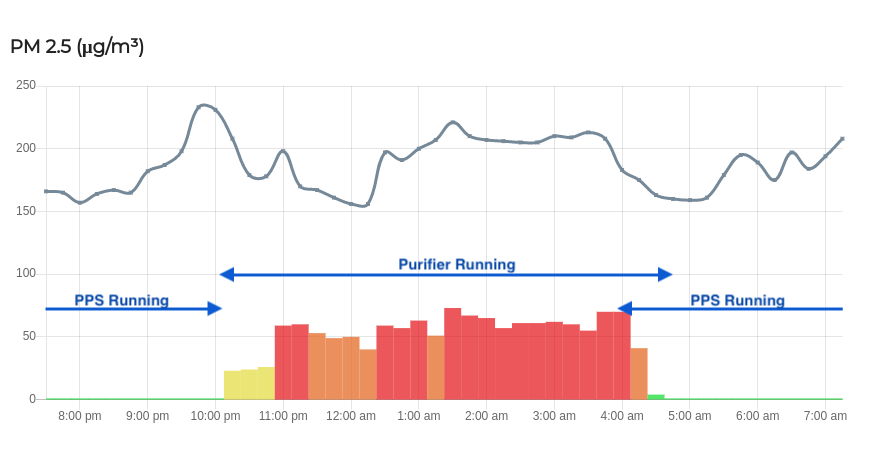Open and Accurate Air Quality Monitors
We design professional, accurate and long-lasting air quality monitors that are open-source and open-hardware so that you have full control on how you want to use the monitor.
Learn MoreWe have made a comparison test between a positive pressure fresh air system (PPS) and a standalone purifier on the effectiveness of bringing the ambient PM 2.5 particles down. A positive pressure fresh air system takes air from outside, filters it through a HEPA filter and pumps it into the room. Thereby pressurizing the room and thus preventing dirty air from entering the room.
To make the comparison meaningful we chose similar specifications on both the positive pressure system and the air purifier.
PPS:
Purifier:
So the purifier is slightly more powerful in regards to airflow.
The comparison was done in a 32m2 room with the above PPS system permanently installed.

As we can see from the graph, once the positive pressure system was switched off, polluted air entered the room through small air gaps. It increased for approximately 1 hour until it reached equilibrium with the purifier at around 50μg/m³.
The standalone purifier was able to reduce the ambient PM 2.5 values by about 75%. We can see some correlation with the outside PM 2.5 values so we can assume that the indoor pollution would always fluctuate depending on the outside values.
On the other hand with the positive pressure system switched on, we can see that the PM 2.5 values stay permanently at zero and there is no correlation with the outside air quality. This is because the positive pressure inside the room prevents any dirty air from entering the room.
So we see that the positive pressure system has a number of advantages:
To learn more about positive pressure systems, read our more detailed article on positive pressure system.
Curious about upcoming webinars, company updates, and the latest air quality trends? Sign up for our weekly newsletter and get the inside scoop delivered straight to your inbox.
Join our Newsletter
We design professional, accurate and long-lasting air quality monitors that are open-source and open-hardware so that you have full control on how you want to use the monitor.
Learn More